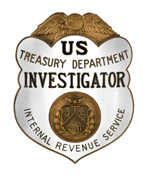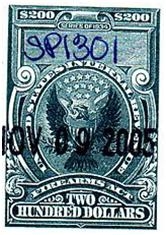Era of Transition

Neither Prohibition’s repeal nor the government’s liquor enforcement resolved the country’s illegal liquor problem. Repeal required the government to re-establish the legal liquor industry. Registered distilleries that had operated legally prior to Prohibition had been dismantled or required extensive repairs. Stocks of ready-for-sale whiskey were small — less than 7 million gallons. However, bootleggers and moonshiners who had established enterprises during Prohibition not only had huge stocks of aged whiskey on hand but also controlled the necessary resources to meet public demand.
"Revenuers": The New Enforcers
Law enforcement was critical, not only to stamp out illegal alcohol production, but also to enforce alcohol tax collection. The new ATU faced grave problems. Corrupt local authorities could not be reformed overnight, and the public’s tolerance of liquor rackets resulted in lackluster prosecutors, complacent juries and lenient judges.

Crime syndicates continued operating illicit distilleries, but the ATU seized many plants in the first few months after its creation. With growing support from the public, the hard work of the ATU slowly began to pay off. The ATU managed to dismantle large liquor syndicates, and the attitude of prosecutors, juries and courts began to change. Schemes to meet the demand for alcohol included counterfeiting Internal Revenue tax stamps, diverting denatured alcohol for beverage purposes, and erecting and operating redistilling plants for alcohol production. Criminals became craftier – but so did agents. When faced with new criminal tactics, agents devised appropriate countermeasures.
Gang Warfare Threatens Public Safety
Gangs battled viciously for control of underground distilleries and distribution networks. Machine guns continued to be the weapon of choice for these criminals. Gangsters killed each other on street corners, in social clubs and in restaurants. The massacres often resulted in the injury or death of innocent bystanders.

The public, once enthralled with glamorous gangsters, became disenchanted with the violence. Congress passed the National Firearms Act of 1934 and the Federal Firearms Act of 1938. These new laws required licensing and taxing of importers, manufacturers and dealers of firearms and ammunition. The ATU assumed the enforcement of the criminal provisions of both acts marking the first enforcement responsibilities for firearms.
In December 1934, Eliot Ness — just 31 years old — arrived at his new post as the Special Agent in Charge* of the U.S. Department of the Treasury’s ATU in the Northern District of Ohio, with 34 Agents under his command.
Ness would serve as the Investigator in Charge* of the Cleveland Office of the ATU until January 1, 1936, when — after fighting organized crime for nearly 10 years — he resigned from his position to become the Director of Public Safety for the City of Cleveland, putting him in charge of the police and fire departments. He successfully headed a campaign to clean up corruption and modernize both public service institutions.
The ATU gradually acquired additional functions such as regulating alcoholic beverages for consumer protection through labeling requirements and production standards, reviewing advertising materials, and policing industry trade practices. In 1951, the Bureau of Internal Revenue reorganized into the Internal Revenue Service. As a result, the ATU absorbed the Miscellaneous Tax Unit, which was responsible for collecting taxes on tobacco, and the regulatory provisions of the National Firearms Act of 1934.
*Position titles changed frequently, but the responsibilities remained the same.


